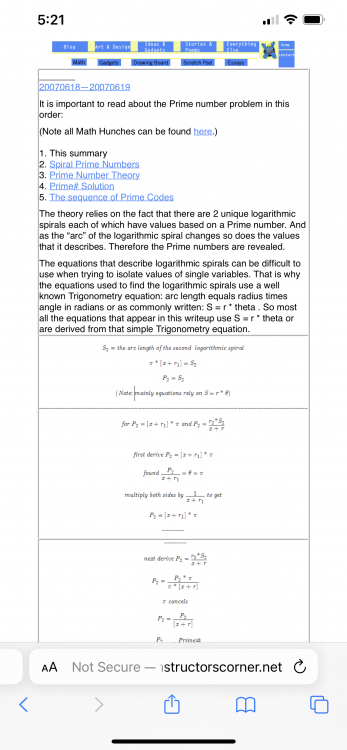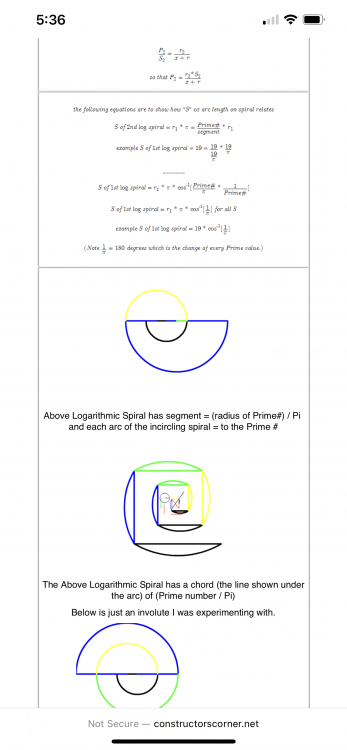-
Posts
568 -
Joined
-
Last visited
-
Days Won
1
Content Type
Profiles
Forums
Events
Everything posted by Trurl
-
Pappy Craylar Challenge: Compare Zeroes of Zeta Function
I have been doing some research into the Riemann Zeta Function. The truth is I really don’t understand it. I get the main idea that zeroes describe Prime numbers. And only ½ holds all the zeroes. But as a layman looking at that, I just think to myself that is because 2 is the only even Prime number. That is if you consider it Prime.
I took a different approach in the Simple Yet Interesting thread. I look for patterns in factoring, specifically in the products of 2 Prime numbers. I reviewed other methods, and they seem to be concentrating on a series. My attempt is simple in that I find equations where pnp can be explained by itself and one of the Prime factors. I knew it sounds absurd. How can you find the unknowns. But I put pnp = pnp and solve for x. Compared to the Zeta function my attempt is primitive. My equation also has the problem of not being able to solve the polynomial equation. Instead, I graph it, plugging in x to see which values are true that complete the equation.
There is also a question of zeroes. I too have zeroes. Except the zeroes on the graph occur at the semiprimes. And the factors of that semiprime are now known as the Prime numbers x and y in the equation. Instead of a real and imaginary number part, there is just real numbers.
That is my challenge to you. Can you relate my equation to a series. (I have put a series of semiprime numbers already in the thread.) But if you take the series and plug it into the Zeta Function, what do you get? (Yes, I don’t understand all the Zeta Function. But what if you took the series in the last post of Simple Yet Interesting and used that equation as f(x) equal to the Zeta Function. I have not worked this out yet, but x at f(x) in the equation can be set to equal a zero.)
As always this is a challenge to write. If you have any questions post them.
My challenge to you is to Find an equation that can put the Pappy Craylar Conjecture equation into a series that can be written or compared to the Zeta function.





